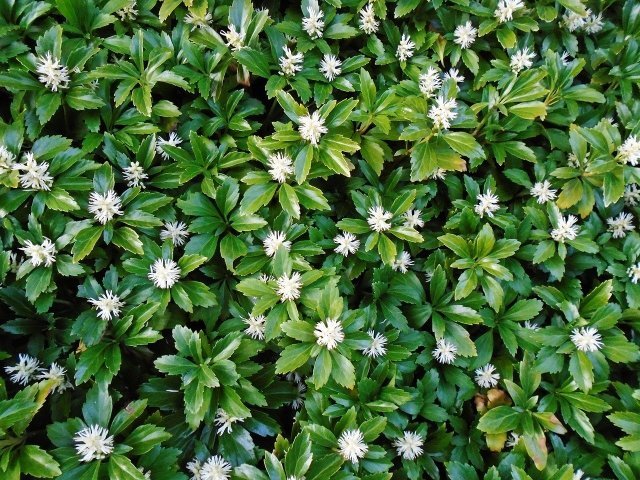Pachysandra can enhance shady spots in your garden with little maintenance. Here’s what you need to know about growing and caring for Pachysandra.
Thickets, also called ysanders or pachysandra, are small shrubs that do best in shady areas. They are originally native to Chinese and Japanese forests. Pachysandra grows over a wide area. The shoots either creep along the ground or grow upright. The leaves of the ysander are green all year round. Some ysanders bloom as early as February, but the white-greenish flowers are relatively inconspicuous.
Due to their bushy growth, ysanders are often used as ground cover. For example, they can enhance shady, empty or unsightly places. Pachysandra is also popular as a grave planting, ornamental plant for flower beds, themed or woodland gardens.
Pachysandra: Here’s what you should consider when growing it

Pachysandra can usually only be bought in the form of cuttings, root runners or adult plants. You will not find seeds in stores. The following tips should be followed when planting ysandra:
- Choose a partial shade to shady location. Since Pachysandra comes from the forests of Asia, the plant is adapted to lack of light. Too much sunlight will cause its leaves to wilt quickly.
- The soil should be loose, slightly acidic, humic and reasonably well-drained. However, it should not be too acidic. Also make sure that the soil is always moderately moist.
- You can plant young plants all year round. Loosen the soil well beforehand and place the rootstock flat in the ground. There should be a distance of about 20 to 30 centimeters between the plants.
- Be sure to water the young plants regularly and sufficiently in the period after planting.
- You can also plant chubby plants in pots. In this case, use a sufficiently large pot.
- Note: Thickweed is considered a poisonous plant because it contains steroid alkaloids. Symptoms of poisoning usually occur only after a relatively large amount of the poison has been ingested. Nevertheless, you should take care to plant ysandra out of reach of children and animals.
Pachysandra: care and propagation
Pachysandra are very easy to care for and are therefore also suitable for people who do not have much experience in gardening. The following tips should be followed when watering, fertilizing & Co:
- Ysandra are well protected from drying out by their shady location. This is reinforced by the dense foliage. Nevertheless, you should always check whether the soil is still moist. In particularly dry months you should water the plants regularly.
- You do not necessarily have to fertilize the plants. In the fall of the first year, you can add some compost to the soil around the young plants. After that you should not use any fertilizer.
- If the plants grow too densely, you can cut them back. This is best done after the flowering period in April or May. Runners that grow too far out from the plant can simply be pulled out.
- In winter, chickweed does not need any additional protection. The plants can tolerate temperatures as low as -28 degrees Celsius.
- Thickmanes usually spread on their own. However, if you want to propagate them additionally, you can do it with the help of head cuttings.
- The best time to propagate Ysandra is in May or June. You then cut cuttings with a length of seven to ten centimeters from a strong mother plant. Make sure that the shoots are not woody. Remove the lower leaves and inflorescences and plant the cuttings (as described above) in the soil.
- Alternatively, you can simply dig up some rooted runners and replant them in another location. You can do this propagation from spring to fall.









